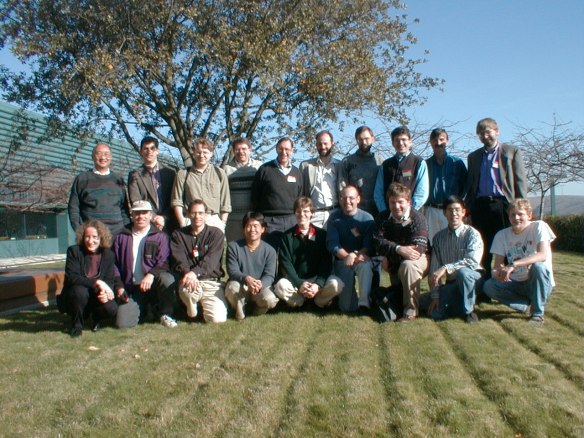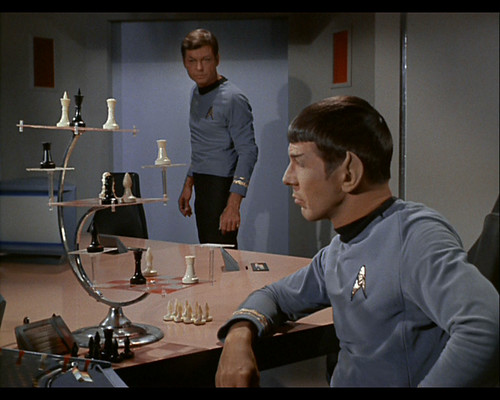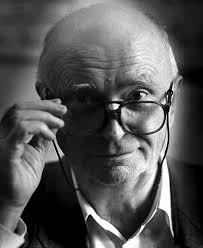The anticipatory excitement of summer vacation endures in the teaching profession like no place outside childhood schooldays. Undoubtedly, ranking high on the list that keep teachers teaching. The excitement was high as the summer of 2015 started out the same as it had the three previous years at Caltech. I would show up, find a place to set up, and wait for orders from scientist David Boyd. Upon arrival in Dr. Yeh’s lab, surprisingly, I found all the equipment and my work space very much untouched from last year. I was happy to find it this way, because it likely meant I could continue exactly where I left off last summer. Later, I realized David’s time since I left was devoted to the development of a revolutionary new process for making graphene in large sheets at low temperatures. He did not have time to mess with my stuff, including the stepper-motor I had been working on last summer.
 So, I place my glorified man purse in a bottom drawer, log into my computer, and wait. After maybe a half hour I hear the footsteps set to a rhythm defined only by someone with purpose, and I’m sure it’s David. He peeks in the little office where I’m seated and with a brief welcoming phrase informs me that the goal for the summer is to wrap graphene around a thin copper wire using, what he refers to as, “your motor.” The motor is a stepper motor from an experiment David ran several years back. I wired and set up the track and motor last year for a proposed experiment that was never realized involving the growth of graphene strips. Due to the limited time I spend each summer at Caltech (8 weeks), that experiment came to a halt when I left, and was to be continued this year. Instead, the focus veered from growing graphene strips to growing a two to three layer coating of graphene around a copper wire. The procedure remains the same, however, the substrate onto which the graphene grows changes. When growing graphene-strips the substrate is a 25 micron thick copper foil, and after growth the graphene needs to be removed from the copper substrate. In our experiment we used a copper wire with an average thickness of 154 microns, and since the goal is to acquire a copper wire with graphene wrapped around, there’s no need to remove the graphene.
So, I place my glorified man purse in a bottom drawer, log into my computer, and wait. After maybe a half hour I hear the footsteps set to a rhythm defined only by someone with purpose, and I’m sure it’s David. He peeks in the little office where I’m seated and with a brief welcoming phrase informs me that the goal for the summer is to wrap graphene around a thin copper wire using, what he refers to as, “your motor.” The motor is a stepper motor from an experiment David ran several years back. I wired and set up the track and motor last year for a proposed experiment that was never realized involving the growth of graphene strips. Due to the limited time I spend each summer at Caltech (8 weeks), that experiment came to a halt when I left, and was to be continued this year. Instead, the focus veered from growing graphene strips to growing a two to three layer coating of graphene around a copper wire. The procedure remains the same, however, the substrate onto which the graphene grows changes. When growing graphene-strips the substrate is a 25 micron thick copper foil, and after growth the graphene needs to be removed from the copper substrate. In our experiment we used a copper wire with an average thickness of 154 microns, and since the goal is to acquire a copper wire with graphene wrapped around, there’s no need to remove the graphene.
Noteworthy of mention is the great effort toward research concerning the removal and transfer of graphene from copper to more useful substrates. After graphene growth, the challenge shifts to separating the graphene sheet from the copper substrate without damaging the graphene. Next, the graphene is transferred to various substrates for fabrication and other purposes. Current techniques to remove graphene from copper often damage the graphene, ill-effecting the amazing electrical properties warranting great attention from R&D groups globally. A surprisingly simple new technique employs water to harmlessly remove graphene from copper. This technique has been shown to be effective on plasma-enhanced chemical vapor deposition (PECVD). PECVD is the technique employed by scientist David Boyd, and is the focus of his paper published in Nature Communications in March of 2015.
So, David wants me to do something that has never been done before; grow graphene around a copper wire using a translation stage. The technique is to attach an Evenson cavity to the stage of a stepper motor/threaded rod apparatus, and very slowly move the plasma along a strip of copper wire. If successful, this could have far reaching implications for use with copper wire including, but certainly not limited to, corrosion prevention and thermal dissipation due to the high thermal conductivity exhibited by graphene. With David granting me free reign in his lab, and Ph.D. candidate Chen-Chih Hsu agreeing to help, I felt I had all the tools to give it a go.
Setting up this experiment is similar to growing graphene on copper foil using PECVD with a couple modifications. First, prior to pumping the quartz tube down to a near vacuum, we place a single copper wire into the tube instead of thin copper foil. Also, special care is taken when setting up the translation stage ensuring the Evenson cavity, attached to the stage, travels perfectly parallel to the quartz tube so as not to create a bind between the cavity and tube during travel. For the first trial we decide to grow along a 5cm long section of copper wire at a translation speed of 25 microns per second, which is a very slow speed made possible by the use of the stepper motor apparatus. Per usual, after growth we check the sample using Raman Spectroscopy. The graph shown here is the actual Raman taken in the lab immediately after growth. As the sample is scanned, the graph develops from right to left. We’re not expecting to see anything of much interest, however, hope and excitement steadily rise as the computer monitor shows a well defined 2D-peak (right peak), a G-peak (middle peak) , and a D-peak (left peak) with a height indicative of high defects. Not the greatest of Raman spectra if we were shooting for defect-free monolayer graphene, but this is a very strong indication that we have 2-3 layer graphene on the copper wire. How could this be? Chen-Chih and I looked at each other incredulously. We quickly checked several locations along the wire and found the same result. We did it! Not only did we do it, but we did it on our first try! OK, now we can party. Streamers popped up into the air, a DJ with a turn table slid out from one of the walls, a perfectly synchronized kick line of cabaret dancers pranced about…… okay, back to reality, we had a high-five and a back-and-forth “wow, that’s so cool!”
, and a D-peak (left peak) with a height indicative of high defects. Not the greatest of Raman spectra if we were shooting for defect-free monolayer graphene, but this is a very strong indication that we have 2-3 layer graphene on the copper wire. How could this be? Chen-Chih and I looked at each other incredulously. We quickly checked several locations along the wire and found the same result. We did it! Not only did we do it, but we did it on our first try! OK, now we can party. Streamers popped up into the air, a DJ with a turn table slid out from one of the walls, a perfectly synchronized kick line of cabaret dancers pranced about…… okay, back to reality, we had a high-five and a back-and-forth “wow, that’s so cool!”
We knew before we even reported our success to David, and eventually Professor Yeh, that they would both, immediately, ask for the exact parameters of the experiment and if the results were reproducible. So, we set off to try and grow again. Unfortunately, the second run did not yield a copper wire coated with graphene. The third trial did not yield graphene, and neither did the fourth or fifth. We were, however, finding that multi-layer graphene was growing at the tips of the copper wire, but not in the middle sections. Our hypothesis at that point was that the existence of three edges at the tips of the wire aided the growth of graphene, compared to only two edges in the wire’s midsection (we are still not sure if this is the whole story).
In an effort to repeat the experiment and attain the parameters for growth, an issue with the experimental setup needed to be addressed. We lacked control concerning the exact mixture of each gas employed for CVD (Chemical Vapor Deposition). In the initial setup of the experiment, a lack of control was acceptable, because the goal was only to discover if growing graphene around a copper wire was possible. Now that we knew it was possible, attaining reproducible results required a deeper understanding of the process, therefore, more precise control in our setup. Dr. Boyd agreed, and ordered two leak valves, providing greater control over the exact recipe for the mixture of gases used for CVD. With this improved control, the hope is to be able to control and, therefore, detect the exact gas mixture yielding the much needed parameters for reliable graphene growth on a copper wire.
Unfortunately, my last day at Caltech before returning to my regular teaching gig, and the delivery of the leak valves occurred on the same day. Fortunately, I will be returning this summer (2016) to continue the search for the elusive parameters. If we succeed, David Boyd’s and Chen-Chih’s names will, once again, show up in a prestigious journal (Nature, Science, one of those…) and, just maybe, mine will make it there too. For the first time ever.




















